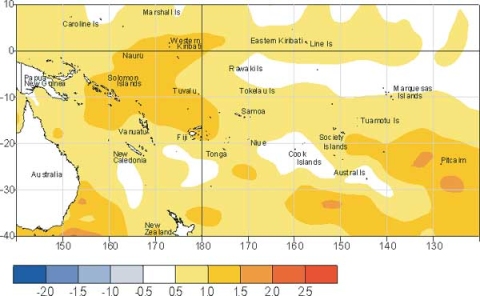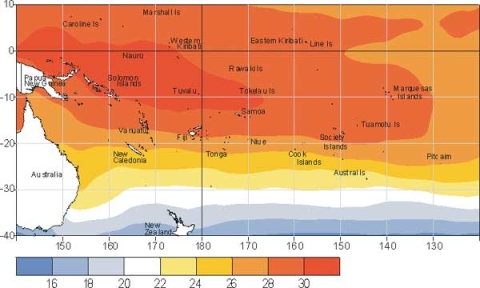ENSO and Sea Surface Temperatures
In the tropical Southwest Pacific, a band of much warmer than usual water at the surface (at least 1.0°C above average) extends from Kiribati south to affect the Solomon Islands, Fiji and Tuvalu. Surface waters at least 1.0°C above average also encompass the region to the south and west of Pitcairn Island.
Most of the Southwest Pacific is warmer than average ( 0.5–1.0°C).
Equatorial Pacific Ocean temperatures continued to warm through May with SSTs being 1.0°C warmer (US analysis, +1.0°C) immediately west of the date line. SSTs were as much as 2°C warmer than usual in the region between the Galapagos Islands and the South American coast. Both NINO3 and NINO4 SST anomalies showed warming since April. Overall surface warming has intensified. There are patches of ocean where the SSTs are near normal near New Caledonia, south of Fiji and around the Southern Cooks.
The probability of an El Niño has increased with the changing conditions in the Pacific Ocean. The weakening of the tradewinds and warming of the equatorial Pacific has increased the possibility of El Niño affecting Southwest Pacific climate later this year.
Sea surface temperature anomalies (°C) for May 2002

Mean sea surface temperatures (°C) for May 2002

